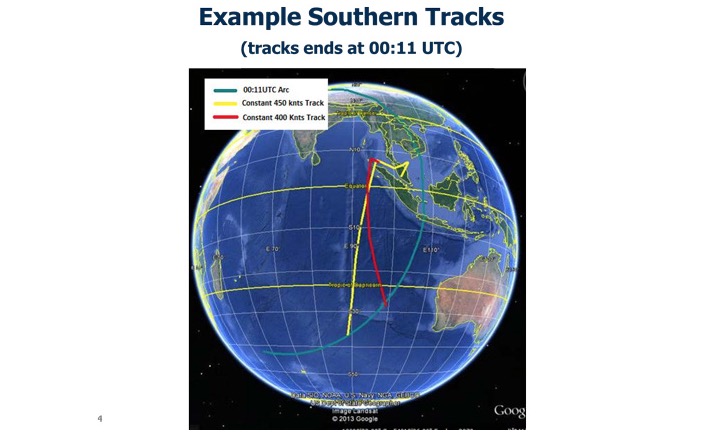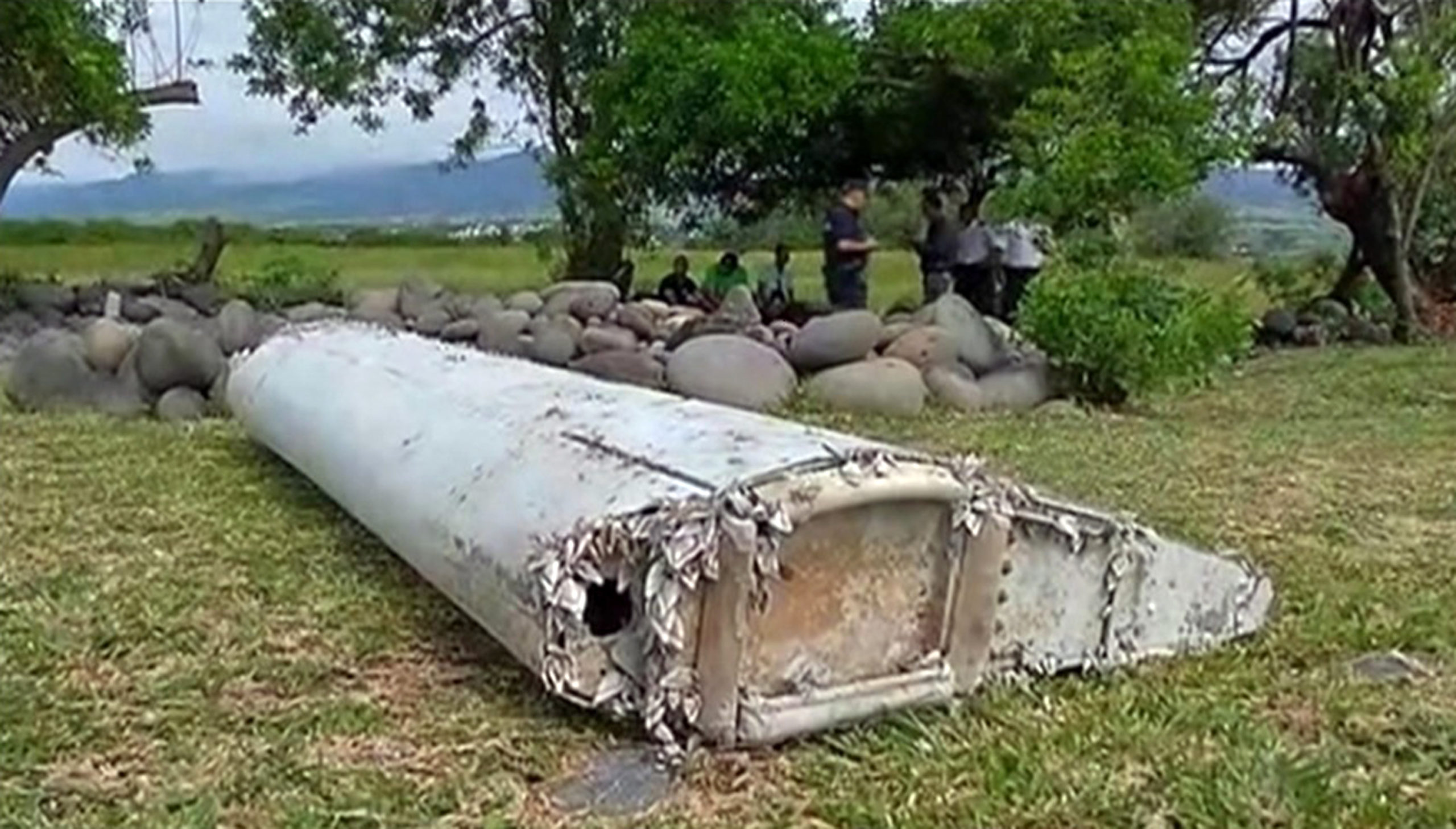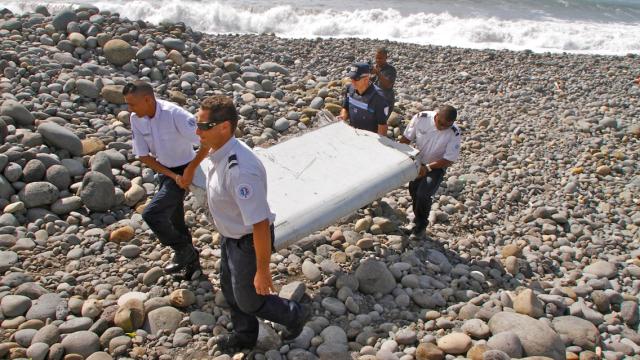It’s been nearly a year and a half since Malaysian Airlines Flight 370 disappeared and investigators finally have their first big lead for finding the lost plane. A piece of an aircraft’s wing — a flaperon, to be specific — washed up on Réunion Island, 193 kilometres off the coast of Madagascar, 4,828km away from where investigators were looking. But we’re still a long way from many of the answers we need.
So far, there are some encouraging signs which indicate that the this might be actual wreckage from the plane. Specifically, the flaperon, which is a movable part of the wing, appears to come from the right kind of plane: A Boeing 777. No other 777 has ever crashed in the ocean before so it couldn’t be from any other plane — in theory anyway.
Investigators are being very cautious in analysing the flaperon. It’s been in the ocean a long time, and frankly, it’s just so improbable that it could’ve ended up there that they need to be sure. A report today from the Wall Street Journal says investigators are under intense pressure to confirm that the debris is from MH370, and that’s not surprising. Mourning families want closure for the loss of their loved ones, and airline officials and safety experts want to make sure this never happens again. But the journey to identify the part has just begun, and it will take a lot of time to confirm if it actually is. Investigators don’t want to make a mistake.
Could the flaperon have possibly travelled that far?
Réunion Island is about as remote as an island can be. The tiny French outpost is 700km off the southeast coast of Madagascar — pretty much on the opposite end of the Indian Ocean from where investigators were officially searching. So assuming this the flaperon really is part of MH370, why was discovered so far from where investigators were looking?
Let’s back up for a second here. Last year, Australia and the US’s transportation safety boards outsourced the official search to Fugro, an oil and gas exploration company from the Netherlands. The company’s effort was plagued by delays, owing to the technical difficulty of searching for a plane-shaped needle in a deep ocean haystack. The company had to purchase a new deep-sea sonar to help it scan the bottom of the three-mile-deep ocean. Additional ships added a sonar device called a towfish that’s towed at depth of 100 meters above the seafloor, and a self-propelled autonomous underwater vehicle (AUV) which can travel even deeper. The search has been heavily criticised for being mismanaged, and for the most part, we haven’t heard many updates. The physical search hasn’t turned anything up.
As the quiet physical search floundered, public entities used maths and science to try to sort out the possibilities themselves. An excellent story about the search by Christine Negroni pinpoints the efforts of a British satellite company Inmarsat at the center of the crazy crowdsourced search. We’d previously reported on some of the findings that Inmarsat had released, which looked at the location of the last “ping” their satellites were able to pick up from the moving plane. As Negroni’s story notes, their clever analysis took the Doppler effect into consideration, which would have changed the frequency and therefore the locations of the pings, explained Inmarsat’s senior VP Chris McLaughlin. “That’s never been done before; our engineers came up with it as a unique contribution.” Inmarsat’s theory was that the plane tracked much further west over the Southern Indian Ocean than investigators originally thought.

While the physical search was private in most of its findings, Inmarsat has made details of their own data-driven search public, effectively encouraging an ongoing crowdsourced effort to consider more places where the plane’s parts might make landfall. So at least according to the crowdsourced effort of lots and lots of nerds, many of them using something called Bayes’ Rule, a probability theorem that allows new data to change the outcomes of statistics, this flaperon could be real.
How will they know it’s from MH370?
After all that searching, the fact that a part has washed up on an island seems like dumb luck. The next part of the mystery seems even more outrageously simplified, as there’s really only one question investigators need to answer: Is this a part from a Boeing 777? That’s because there’s never been a 777 lost over the ocean before: MH370.
There are already some encouraging signs that the part is from a 777. The 777 flaperon, which is a moveable part from the back of the wing, has a particular shape that’s unique to all Boeing’s other flaperons, so a simple comparison of the dimensions could easily prove that it’s from a 777.

The flaperon after it washed up on shore, Reunion 1ere via AP
But remember that the part has been tossed in the ocean for a year and a half. There were some other details seen in photos that made aircraft safety expert David Soucie think it was from a 777, as he told CNN:
There also is a seal on the top of the part that “is consistent with what I would see on an inside flap on a triple 7,” he said, and the barnacles on the part are consistent with the “parasitic activity” that would take place from being underwater so long.
However, the part appears to be coated in white paint, which would run counter to Soucie’s other observations in that the 777’s parts would be coated in zinc chromate, not paint. Soucie acknowledged, however, that the part could be coated in something from the ocean.
Aircraft parts also have serial numbers inscribed into them, and this could be another way to confirm not only which type of plane the flaperon is from but also the exact aircraft it was made for. But again, ocean oxidation could prevent such a number from being found. Wired reported that another aircraft security expert, Xavier Tytelman, claimed to make an undeniable match based on the shape and he also says he found what he thinks is part of a serial number: “BB670.”
If, for some reason, the shape or serial number of the part is not conclusive, there are other ways to determine if the flaperon is from MH370. In fact, how the piece’s materials broke down over the 500 days in the ocean might be a big clue, especially when determining when the part separated from the plane, which metallurgists would be able to see with an electron microscope, according to the Wall Street Journal:
“Immersion in the sea and the temperature of the water definitely can have some impact” on the condition of debris, according to Robert MacIntosh, the former top international official at the U.S. National Transportation Safety Board. Oxidation or corrosion can occur depending on the type of aluminium alloy, he said, though metallurgists would know how to deal with such conditions.
It may take weeks, but as Flight Club summarises, once the part is determined to be from a 777, “all indications will be that this is wreckage from the lost airliner.”
What happens next?
The Malaysian government dispatched a team to Réunion Island to examine the flaperon as well as other debris found in the area. The piece is now being sent to an aeronautical technology center in Toulouse, France that handles other aircraft crash investigations. It was flown out this morning.
#MH370: Another photo of the suitcase reportedly found near a wing piece on Reunion Island http://t.co/n6rGi2tZgX pic.twitter.com/FGdbJJaMZH
— Sumisha Naidu (@sumishanaidu) July 30, 2015
Of course there’s a twist: There was also a report of suitcase that was found near where the flaperon washed up on shore. It has also not been confirmed to be associated with MH370, but it does offer another encouraging — if immensely improbable — sign that might shift more investigation efforts towards this tiny island, where more parts might perhaps be discovered.
And even if this plane is determined to be MH370, there’s still so much we need to know. Why did the plane go down? What happened to the 239 people on board? Let’s hope this tiny clue begins a large-scale recovery effort that might start to reveal the story, piece by piece.
AP Photo/Lucas Marie
